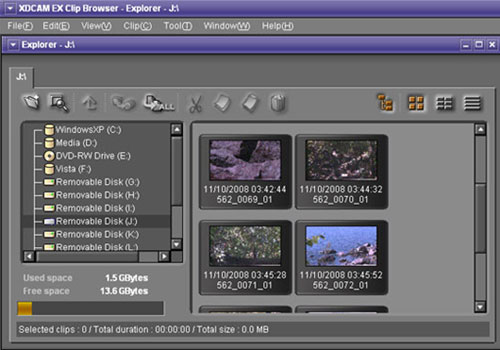 Ok, after working in the business now for many, many years I have come to the conclusion that although a lot of editors / cameraman seem to want to ‘leap’ onto the newest technologies out there, very few actually know how to use it. Take for instance the EX camera, which these days seem to be one of the premiere choices for production shoots, along with it’s versatility on the set. it displays an impressive image. However, as good as the camera is, when the footage comes to the editing room, most editor’s have no idea how to actually bring the footage into the editing room properly. So here we go.
Ok, after working in the business now for many, many years I have come to the conclusion that although a lot of editors / cameraman seem to want to ‘leap’ onto the newest technologies out there, very few actually know how to use it. Take for instance the EX camera, which these days seem to be one of the premiere choices for production shoots, along with it’s versatility on the set. it displays an impressive image. However, as good as the camera is, when the footage comes to the editing room, most editor’s have no idea how to actually bring the footage into the editing room properly. So here we go.
Assuming that as an editor you receive footage either on cards or passport drives, chances are the footage is still in it’s native format which means you cannot import it directly into whatever NLE system your using. Now, Sony has some pre-settings that it has added to it’s Clip Browser, and that’s where the problem comes in. So after importing the footage into the Clip Browser, many editor’s will just look at the export options and for example if they are using an Avid, will say “Hmm… Avid AAF(V), well that seems logically…” and will use that option. However, that is where the mistake lies. Yes, the ‘Avid AAF(V)’ option will export your footage fast, and import with no issues into your project, but now you’ll start noticing that hmm, you have no timecode, or wait, you have no metadata at all! That means that if the footage is blown away there is no relinking of the timeline. Now, usually when this happens, bad rumors spread, and people start thinking about the limitations of the format or ( as I have heard first hand ) most editor’s will just work with the footage as is, and then say afterwards that this is just one of the problems of working with the EX (or equivilant style ) camera, but they would be wrong.
BUT… the good news is that this can all be corrected through a simple rewinding of the clock. See, when Sony’s Clip Browser first came out, there was not 10 different options for exporting footage, but like everything, the software evolved, and now the numerous options have clouded what was once a simple and very effective piece of software. The only export option which still holds all the metadata (including timecode) is the original ‘MXF for NLE’s(N)’. While this option may take a little longer to export and import, it will give your project the proper metadata it needs to hold timecode, and re-link should you need too.
There, and that’s that. Amazing how sometimes technology can sometimes hurt us with it’s complications, when really all we have to do is take a step back and simplify the equation.
